
Food Histories of Tower Hamlets
Welcome to our Food History Map of Tower Hamlets
Our trail provides a glimpse into the range and variety of food histories in Tower Hamlets. Tower Hamlets was a site of agricultural land and market gardens for the City of London in medieval times. Indeed, its rural landscape origins are in its name, and those of neighbourhoods such as Stepney Green, Bethnal Green Gardens and Island Gardens (Brown et al., 2019). But brutal colonial histories and legacies, many silenced, structured the borough’s landscapes and relations for centuries (Ghelani and Palmer, 2021). One of the most significant histories affecting food was the establishment of the docks in Tower Hamlets by The East India Company in 1802. Its vast colonial, military, and slavery project created an infrastructure of large warehouses, docks, factories, and rows of terraced houses which transformed the borough and its residents (Aziz, 2022; Brown et al., 2019). Situated close to the Thames and the City of London, Tower Hamlets became a site for colonialists, global merchants, industrial elites and shipping- based businesses working in the colonies and slave trade.
Less is known about how these histories shaped food production and consumption over the next 150 years. But London and other European cities have been 'fed with the products of plantations and slavery', with today's agro-food businesses grown from colonial extractivism (Ferrando et al., 2021:62).
Generations of migrants, refugees, and labourers, many of whom worked for The East India Company, or merchant ships or were British subjects from the colonies, transformed the Borough (Aziz, 2021: 7). Men from India, Somalia, Yemen and China settled after working in The East India Company, the Merchant Navy, and the shipping industry in the 19th and early 20th centuries. British subjects from the colonies - men and women - came from the Caribbean and Bangladesh in the later 20th century. Bringing new knowledge, creativity, and resilience against racism, they transformed the food lives of Tower Hamlets.
Today, we can see very little in Shadwell and beyond of the medieval market gardens; the 18th century German sugar refineries; the 19th and 20th century food factories and Jewish soup kitchens, grocers and markets; the 20th century Somali, Bengali, Italian and Maltese cafes, clubs and dining rooms; early 20th century Limehouse Chinatown. These histories and people flavour what we can buy at the local markets and in corner shops, grow in allotments and on balconies, eat in local cafes and restaurants, and order on food deliveries. As the cost-of-living bites hard, we see a sad but necessary return to food charity and social eating that helped our ancestors. But markets and cafes continue to be important meeting places for people in the East End of London. As Bernard Kops writes in Cheryl Aaron’s book, ‘Café’ in 1985, 'cafes are oases, crossroads, resting places... The East End of London is full of these cafe oases, and the East End is itself an oasis. It always was a refuge... people landed here near the docks and they settled... their various dreams and struggles permeate these pavements, these walls'.
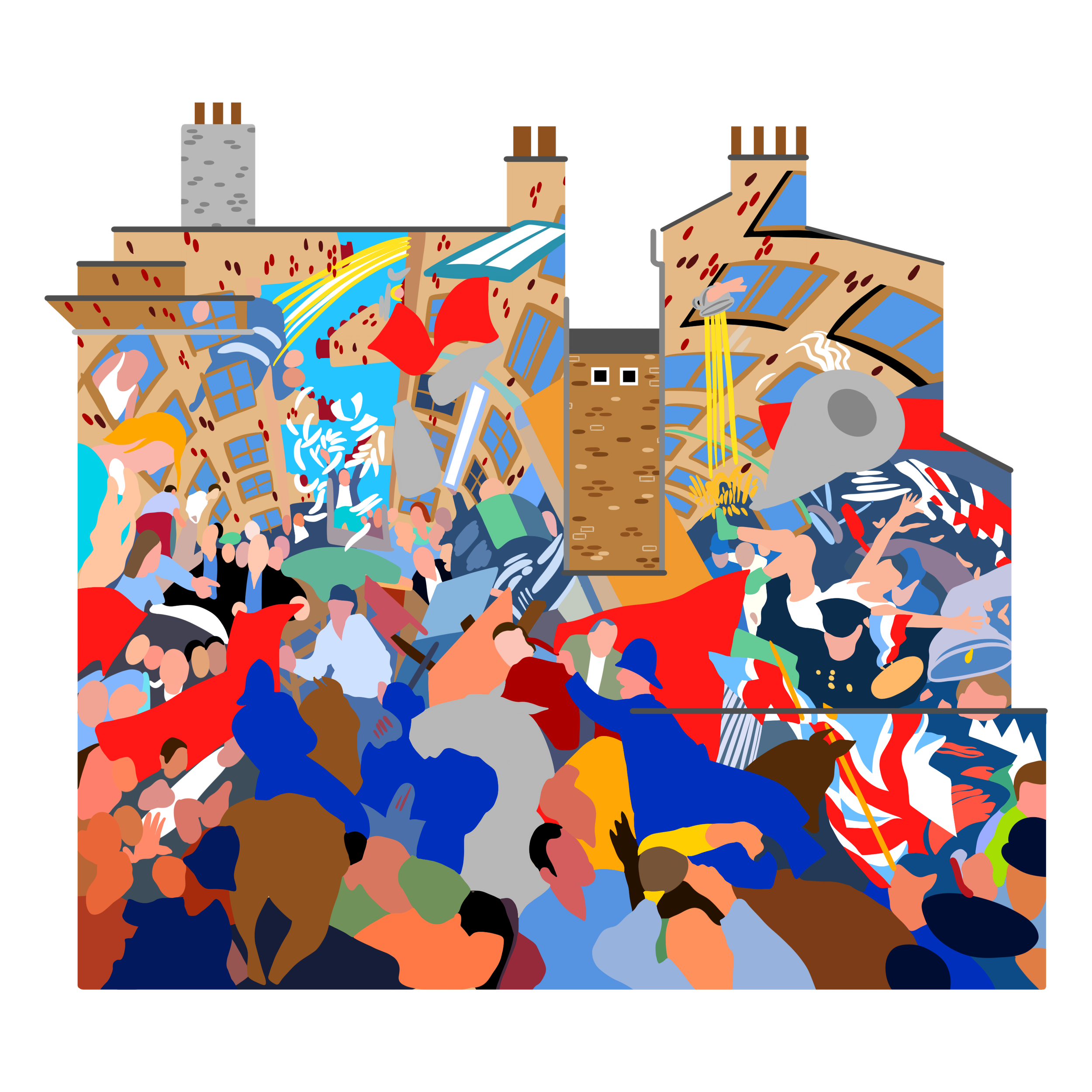
CABLE ST MURAL: The Cable Street Mural is a large commemorative artwork painted onto the west wall of St George's Town Hall. The mural recreates scenes from the 1936 Battle of Cable Street. On 4th October 1936, the leader of the British Union of Fascists, Oswald Mosely, attempted to march fascists through Cable Street, home to a largely Jewish population. An estimated 250,000 people rallied against Mosely's Black Shirts, including Jewish residents, Irish dockers and railway workers. Adopting the slogan 'they shall not pass', protestors threw milk bottles, kitchen utensils and the contents of chamber pots at the police. In 2021, residents and leaders from Tower Hamlets gathered at the mural for the 85th anniversary of the Battle of Cable Street.
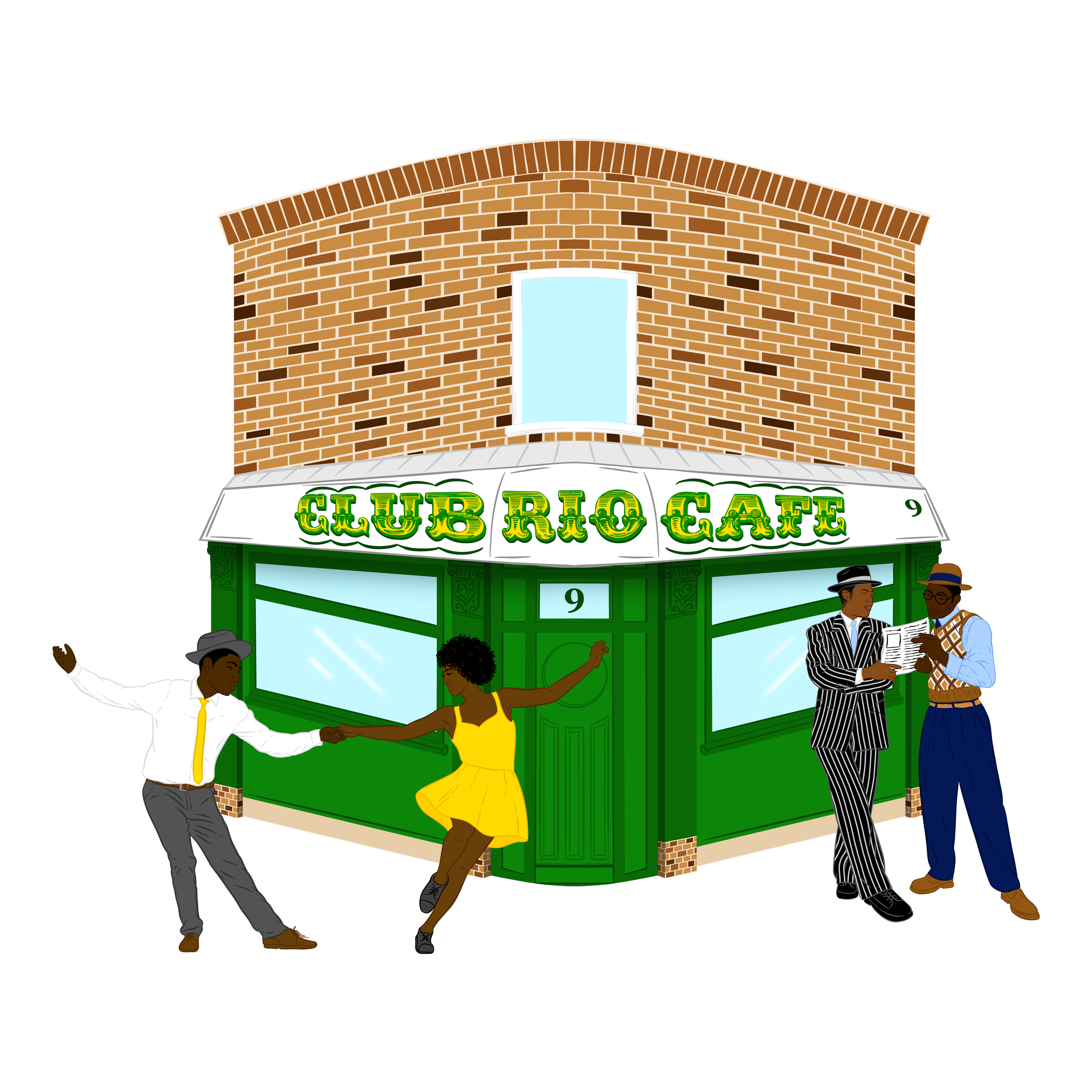
CLUB RIO CAFE: Club Rio Café at 9 Ensign Street was a Somali-run café run in the 1950s by Mokter Miah, and in the 1960s by Omar Haji Ahmed and Eva Gertrude Ahmed on the site of the Royal Standard pub. The Rio (or Riyo), which means 'dream' in Somali, was typical of many Somali, and Bengali cafes created for sailors from Bengal, Indonesia, Malta, and Somalia. Somali and Caribbean Clubs, lodgings and cafes appeared at the western end of Cable Street forming a growing community. Tofazzul Ali ran 20 Wellclose Square as a lodging house for Bengali seamen in the 1950s, and Abdi Warsama Shirreh had a hostel and dining rooms from 1955 for Somali seamen at 25—27 Ensign Street. Another café at 7 Ensign Street was run by Mohammed Hassan in the 1950s, and Mehmet Salih had dining rooms at what was then 14 Cable Street. Cafes, clubs and lodgings formed part of a hospitality and community infrastructure built up by migrants partly because of the racism of white cafes and lodgings. Club Rio Café has been described as 'one of the most iconic Somali cultural institutions in Britain. It was pure sauce and Somalinimo'. Some suggest that the cover of Bob Dylan's album Rough and Rowdy Ways depicts Club Rio Café in the 1960s.
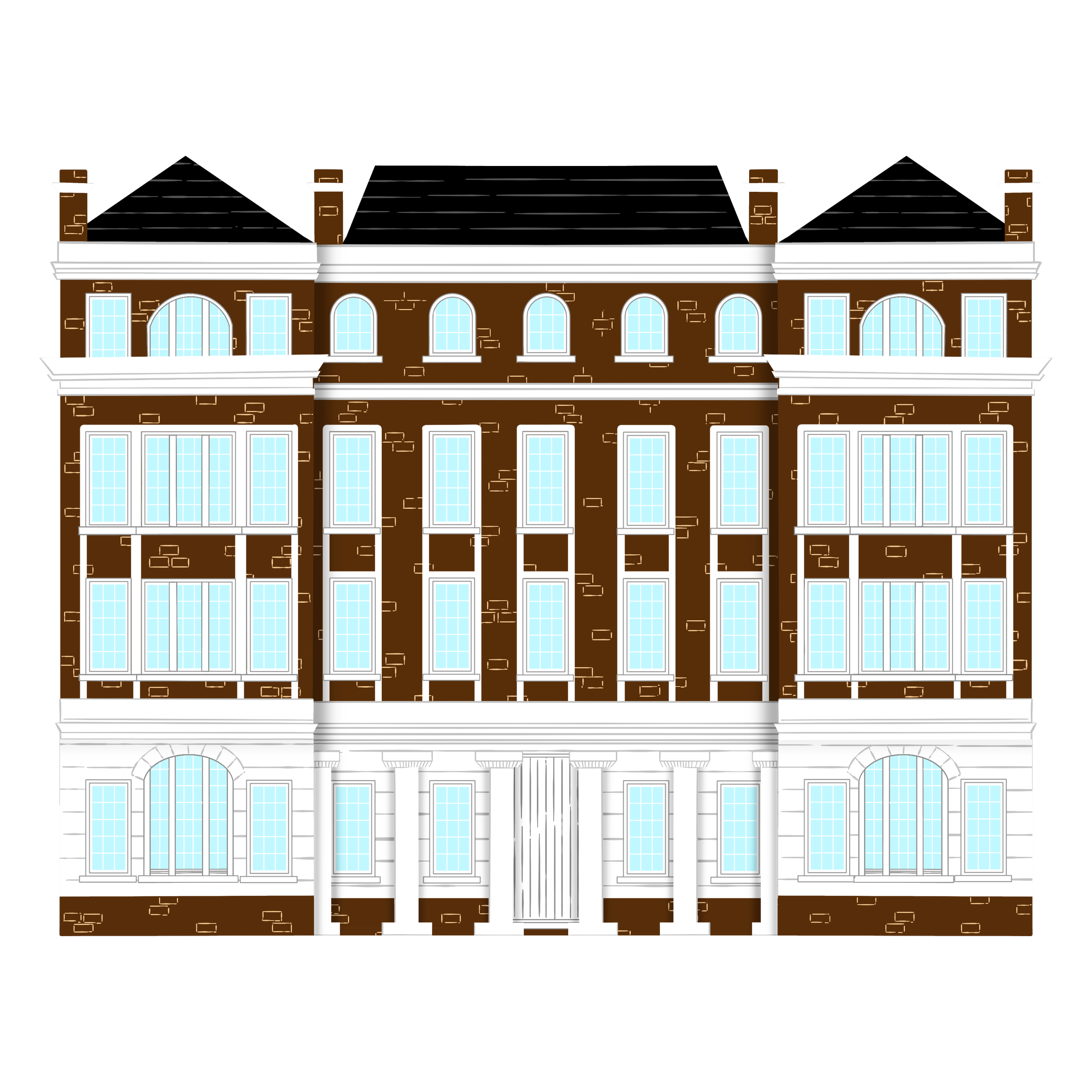
SAILORS' HOME NOW WOMAT'S CITY HOSTEL: The first hostel on this site – Sailor's Home - was opened in May 1835 to provide short stays for sailors. Initially the annual number of boarders was 528 and rose to 8,617 in 1861. By 1919 639,005 sailors had stayed at the home, around half were English and many of the rest from regions that reflected the colonial reach of Britain during that time: Mauritius, West Africa, West Indies, East Indies, and China. The first floor housed a dining and reading hall. One 1874 visitor was served 'four meals a day, ale being served at midday and in the evening' and one sailor declared that 'the victuals is of the best'. Today, Wombat's City Hostel sits on the site, still hosting visitors from around the world with its bar revealing some of the building's history.
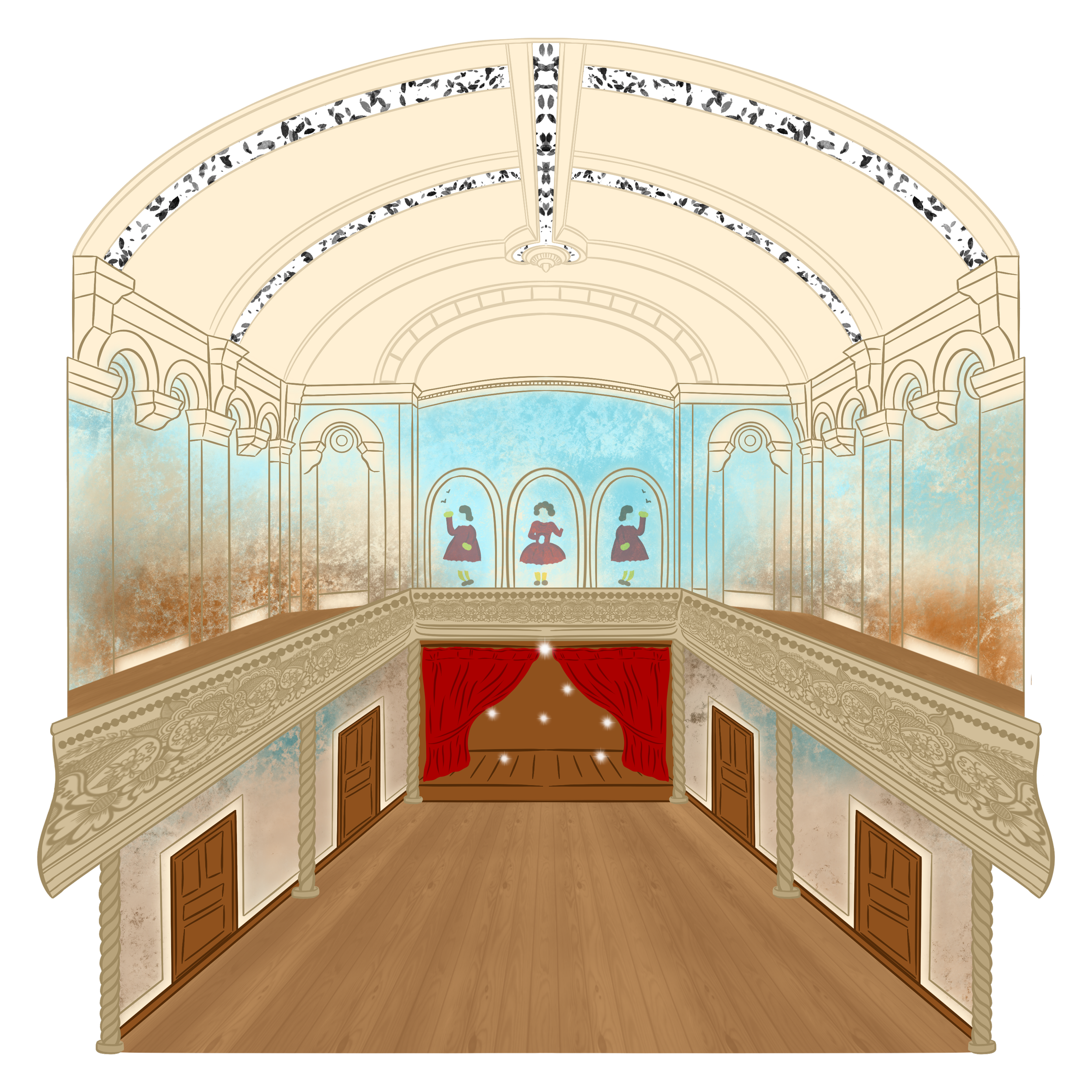
WILTON'S MUSIC HALL: Wilton's Music Hall was constructed by John Wilton in 1859 from five houses in Grace's Alley. In 1888 Wilton's was bought by the East London Methodist Mission who renamed the building 'The Mahogany Bar Mission' and provided support for the poor. During the Great Dock Strike of 1889, a soup kitchen was set up at The Mahogany Bar, feeding a thousand meals a day to the starving dockers' families. There are reports that it provided a refreshment station for protesters in the Battle of Cable Street. Wilton's was granted Grade Il listed status in the 1970s and reopened as a performance venue in 1997. Today, the hall is the world's oldest surviving venue of its kind.

SUGAR BAKERS OF WELLCLOSE SQUARE: In the 1720s, at least 8 sugar refiners or houses operated around Wellclose Square. Sugar refineries were created by Dutch and then German migrants. Sugar baking, as it was called, was very dangerous work. The sugar bakers boiled sugar cane in huge vats on open flames and then poured it into moulds to make sugar loaves. Many sugar bakers were badly injured or killed. Due to enslavement, colonialism and sugar plantations, Britain consumed vast amounts of sugar. In 1780, No. 48 was a seven-storey gable-fronted sugarhouse which later became George Whybrow's pickle factory in the 1870s, after sugar refining finished. The pickle factory manufactured pickles, sauces, bottled fruits and other goods, and imported capers, salad oil and castor oil and exported to the colonies.
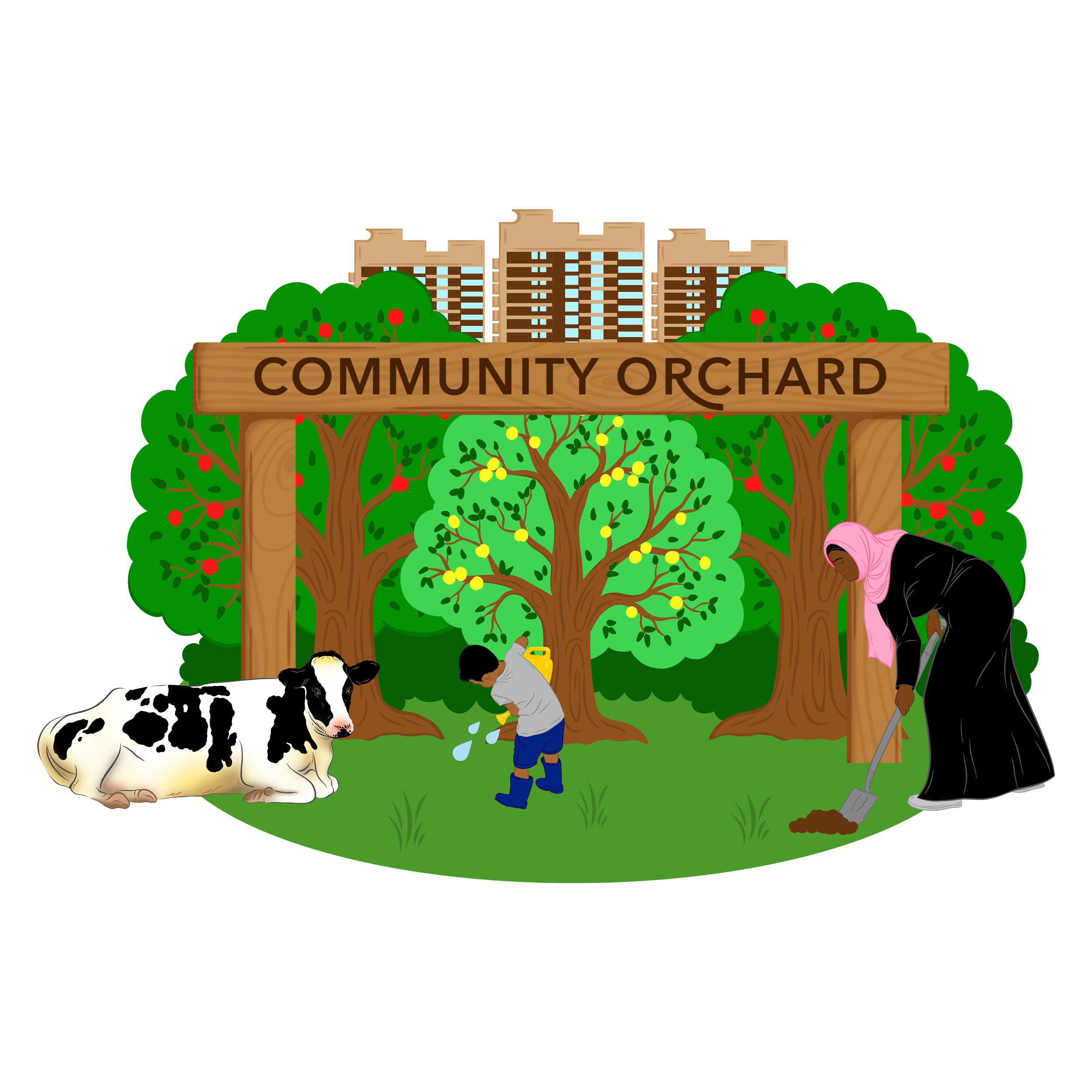
SWEDENBORG GARDENS & ORCHARD: Swedenborg Orchard is situated near Swedenborg Gardens. The gardens are named after Emanuel Swedenborg (1688-1772), a Swedish philosopher and theologian who lived in London's Prince's Square, later renamed as Swedenborg Square in 1939, and was buried in the gardens. The site has undergone various changes since the 1960s, including the removal of the original buildings. The Square was the site of the last dairy in Tower Hamlets, first established by a Welshman in the 1900s and then taken over by David Carson in 1924. The Carsons had a shop and a cowshed in the Square which even managed to survive the war, although with fewer cows, until 1954 when they were forced to close the dairy. The orchard was first proposed in 2014 and volunteers worked with the charity Trees for City to plant around 50 fruit trees. Today, local residents enjoy the community orchard and grow a variety of plants from coriander and kodu to strawberries. Fruit trees flourish, insects visit the bug hotel, and residents participate in hot composting and the wormery.

WATNEY MARKET: Watney market is an outdoor street market specialising in Bangladeshi fruit, vegetables, fish, and clothing alongside Bangladeshi cafes, fishmongers and grocers, an Iceland and even a Wimpy. The market has a long history reflecting patterns of Jewish and Bengali migration. In 1881, at the southern end of Watney Street, John James Sainsbury of the present-day Sainsbury's chain launched a new shop at 68 Watney Street, selling cheese and salt bacon to dockers. It's not just men who have run stalls, for over 100 years women have worked in the market. In the early 20th century, people from the local community — often Jewish and Irish — flocked to inspect the 'barrows laden with fish, vegetables, and other articles of food, cheap second-hand furniture, old iron, rabbit skins, and many articles besides' in over 100 shops and 100 stalls that were regularly on the street (Williams 1895 cited in King's College London, 2021). Watney Street was bombed during the Blitz and virtually razed to the ground but rebuilt in 1977. Today the transnational food economy is the epicentre of the local community's food lives especially in Chapman Street with its cornucopia of vegetable and fruit, grocery, and fish bazaars.

BATGERS CONFECTIONERY FACTORY: Batger and Co was an East End confectionery manufacturer founded by Elizabeth Batger, from a family of sugar refiners in 1748. In the mid-19th century the factory moved to the site now known as Cable Street Studios, in the 1900s it covered two acres. and employed over 1000 employees. By the end of the 19th Century, Batgers was one of the largest jam and confectionery factories in the world, processing around 2,000 tons of sugar and I,000 tons of fruit each year. Known for its innovative marketing appeals, the company produced a range of products including Silmos Lollies, and Chinese Figs. During the First World War, Batger's supplied the British army with jam. The company moved to South London after the original factory was bombed, and famously continued manufacturing sweets during rationing in the Second World War.
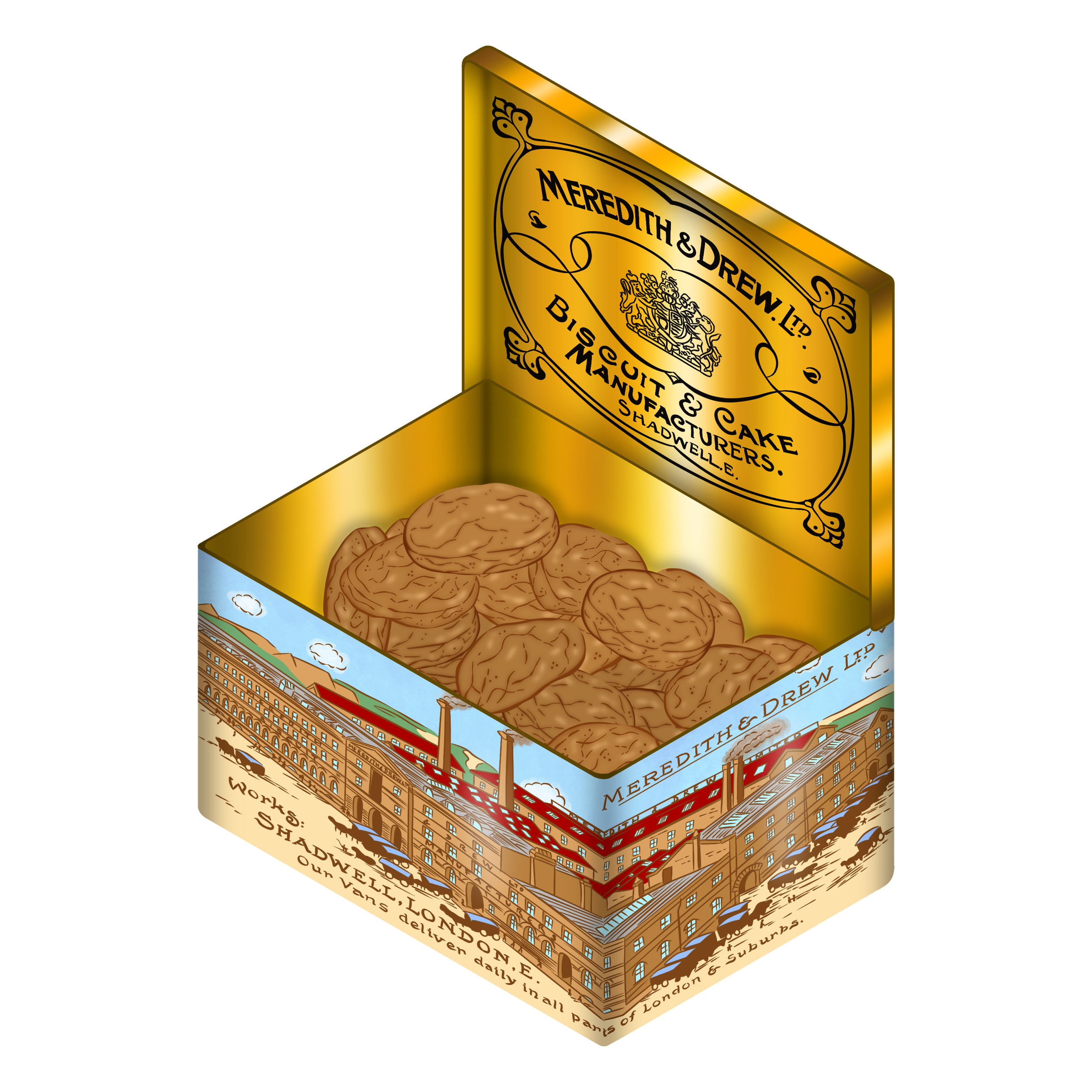
MEREDITH & DREW BISCUIT FACTORY: Meredith and Drew, once the largest biscuit manufacturer in Europe, was founded in 1891, when Meredith Senior and later Meredith Junior joined forces with biscuit maker Drew and Sons. Their biscuits included Digestives, Forget-me-nots, Ginger Nuts, Rob Roys, Creamonas and Victory Creams. After obtaining a Royal Warrant in 1884, the company extended its factory in 1886 on Shadwell High Street, producing mainly for the catering industry.
Contributions
Elaine Swan, Shazna Hussain, Sajna Mia, Julia Kidd, Jessica Horne, Lucy Wheeler and Julie Yip
Art by Nasima Sony Sultana
Acknowledgements
Tower Hamlets Local History Library & Archives
Wombat's City Hostel
With thanks to Art on the Underground — Brixton Botanical Map for inspiration.
References for our Tour and Trail
Introduction
Brown, C., Husbands, C., & Woods, D. (2019). Transforming education for all: Tower hamlets and urban district education improvement. In Innovations in educational change (pp. 23–38). Springer.
Ghelani, S., & Palmer, S. (2021). Common salt. LADA
Aziz, A. (2021). Globalization, class, and immigration: An intersectional analysis of the new east end. Sage Open, 11 (1). https://journals.sagepub.com/doi/full/10.1177/21582440211003083
Ferrando, T., Claeys, P., Diesner, D., Vivero-Pol, J. L., & Woods, D. (2021). Commons and commoning for a just agroecological transition: The importance of de-colonising and decommodifying our food systems. In C. Tornaghi & M. Dehaene (Eds.), Resourcing an agroecological urbanism (pp. 61–84). Routledge.
Worcester House and Stepney City Farm
(n.d.) Stepney City Farm, About. Available at: https://stepneycityfarm.org/?doing_wp_cron=1657118971.9590759277343750000000
(n.d.) Stepney City Farm, Ruined Arch on the Farm. Available at: https://stepneycityfarm.org/ruined-arch-on-the-farm/?doing_wp_cron=1657120000.1327090263366699218750
(n.d.) Stepney City Farm, Our History. Available at: https://stepneycityfarm.org/about-the-farm/our-history/
Miller, B. (2016). Stepney Green: Archaeologists reveal shoes, goblets and more of ancient EastEnders. www.culture24.org.uk/history-and-heritage/archaeology/art547832-stepneygreen-crossrail-archaeology-london-mansion
Shadwell Fish Market
(2018).’King Edward VII Memorial Park, Shadwell Fish Market, Explorers and Pubs’, A London Inheritance: A Private History of a Public City. Available at: https://alondoninheritance.com/london-parks-and-gardens/king-edward-vii-memorial-park-shadwell-fish-market-explorers-and-pubs/
(2022) City of London, History of Billingsgate Market. Available at: https://www.cityoflondon.gov.uk/supporting-businesses/business-support-and-advice/wholesale-markets/billingsgate-market/history-of-billingsgate-market
Cable Street Community Gardens
(2015) ‘At Cable St Community Gardens’, Spitalfields Life, 31 July. Available at: https://spitalfieldslife.com/2015/07/31/at-cable-st-community-gardens/
(2018) Social Farms and Gardens, Cable Street Community Garden. Available at: https://www.farmgarden.org.uk/org/public-profile/43218
Blackham, C. (2018) ‘Cable Street Community Garden & Open Garden Squares Weekend’, Enthusiastic Gardener, 25 May. Available at: https://enthusiasticgardener.com/2018/05/25/cable-street-community-garden-open-garden-squares-weekend/
Limehouse Chinatown
Holland, O. (2017) ‘Inside the Last Three Restaurants of London's Forgotten Chinatown’, That’s, 11 February. Available at: https://www.thatsmags.com/guangzhou/post/17619/the-last-three-restaurants-in-london-s-forgotten-chinatown
Sukhadwala, S. (2018) ‘How Long Have Londoners Been Eating Chinese Food For?’, Londonist, 12 February. Available at: https://londonist.com/london/how-london-got-a-taste-for-chinese-food
(2018) ‘Liminal Limehouse: Pursuing Escape in London’s Orient’, Walking Through London’s History, 8 December. Available at: https://wtlh18.wordpress.com/2018/12/08/liminal-limehouse-pursuing-escape-in-londons-orient/
Cable Street Mural
Rosenberg, D (2016) ‘”An antidote to the far right's poison” – the battle for Cable Street’s mural’, The Guardian, 21 September. Available at: https://www.theguardian.com/artanddesign/2016/sep/21/battle-cable-street-mural-fascists-east-end
Barling, K (2011) ‘Cable Street: “Solidarity stopped Mosley's fascists”', BBC News, 4 October. Available at: https://www.bbc.co.uk/news/uk-england-london-15171772
(n.d.) St George-in-the-East Church, Cable Street. Available at: http://www.stgitehistory.org.uk/media/cablestreet.html
Club Rio Café
Milne, S.A. (2019) ‘Accounting for the hostel for “coloured colonial seamen” in London’s East End, 1942–1949’ National Identities
Everyday Muslim (2017) Numbi Arts - Rio Cafe, the Harlem of London - Somali British Heritage. Available at: https://youtu.be/351t838hcYM
Numbi Arts (2020). ‘The Rio Café was one of the most iconic Somali cultural institutions…’ Twitter, 19 June. Available at: https://twitter.com/numbiarts/status/1273935908287504393
Sailors’ Home Now Wombat’s City Hostel
(2019) UCL, Survey of London, Wombat’s City Hostel, formerly the Sailors’ Home. Available at: https://blogs.ucl.ac.uk/survey-of-london/2019/04/19/wombats-city-hostel-formerly-the-sailors-home/
Kennerley, A. (2008) ‘Joseph Conrad at the London Sailors’ Home’, The Conradian 33(1), p16. Available at: https://www.jstor.org/stable/20873627
Mayhew, H. (1850) ‘Letter XLVIII’, The Morning Chronicle: Labour and the Poor (1849-50) in The Dictionary of Victorian London. Available at: https://www.victorianlondon.org/mayhew/mayhew48.htm
Wilton’s Music Hall
Luckhurst, R. (2006). ‘The Music Hall & Popular Culture’, English Literature in Transition, 1880-1920, 49(2), pp.194–197.
(n.d.) ‘Wilton's Music Hall archive’, V&A. Available at: https://www.vam.ac.uk/articles/wiltons-music-hall-archive
(2019) ‘Wilton's Music Hall (Former Methodist Mahogany Bar Mission) - Graces Alley, London, UK’, Waymarking. Available at: https://www.waymarking.com/waymarks/WMNC67_Wiltons_Music_Hall_Former_Methodist_Mahogany_Bar_Mission_Graces_Alley_London_UK
Ludlow, M (2020) ‘The Everlasting Grandeur of Wilton’s Music Hall’, Roman Road London, 3 April. Available at: https://romanroadlondon.com/wilton-s-music-hall-history/
(n.d.) ‘History: Find Out About Our Past’, Wilton’s. Available at: https://wiltons.org.uk/heritage/history
Wellclose Square
Palin, W. (2012) ‘The Lost Squares of Stepney’, Spitalfields Life, 30 December. Available at: https://spitalfieldslife.com/2012/12/30/the-lost-squares-of-stepney/
(2018) ‘Wellclose Square’, Survey of London, 9 October. Available at: https://surveyoflondon.org/map/feature/1739/detail/
Swedenborg Gardens & Orchard
(n.d.) Project Architects, Swedenborg Square Orchard. Available at: https://www.projectarchitects.co.uk/swedenborg-square-orchard
Savage, T. (n.d.) SocietyLinks Tower Hamlets, Swedenborg Gardens: Then and Now. Available at: https://irp.cdn-website.com/913374e3/files/uploaded/Swedenborg%20Gardens%20final%281%29.pdf
Watney Market
(n.d.) East End Women’s Museum, Women at Watney: Voices from an East End market. Available at: https://eastendwomensmuseum.org/women-at-watney
Toth, A. (2021) Whitechapel LDN, Watney Market and its Troubled History. Available at: https://whitechapellondon.co.uk/watney-market-history/
(n.d.) East End Women’s Museum, Women Traders. Available at: https://eastendwomensmuseum.org/whod-give-me-a-pound-for-that-women-traders
Williams, M (1895) cited in (2021) King’s College London, History of Watney Market. Available at: https://www.kcl.ac.uk/history-of-watney-market
Batgers Jam & Confectionery Factory
(n.d.) Guidetags Digital Interpretive Platform, Batger & Co Confectionary [sic]. Available at: https://www.guidetags.com/mindmaps/explore/hist-3p55/3705-batger-and-co-confectionary
(2015) ‘Machinations: Batger & Co’, Let’s Look Again, 1 September. Available at:
http://letslookagain.com/tag/chinese-figs/
Simpson, A. (2022) ‘The Way We Lived in 1949 Part 9’, 18 January. Available at :
https://chorltonhistory.blogspot.com/2020/09/the-way-we-lived-in-1949-part-9.html
Meredith & Drew Biscuit Factory
Farrell, T. (2015) ‘Strange But True: Meredith & Drew’, Let’s Look Again, 9 November. Available at:
http://letslookagain.com/2015/11/strange-but-true-meredith-drew/
